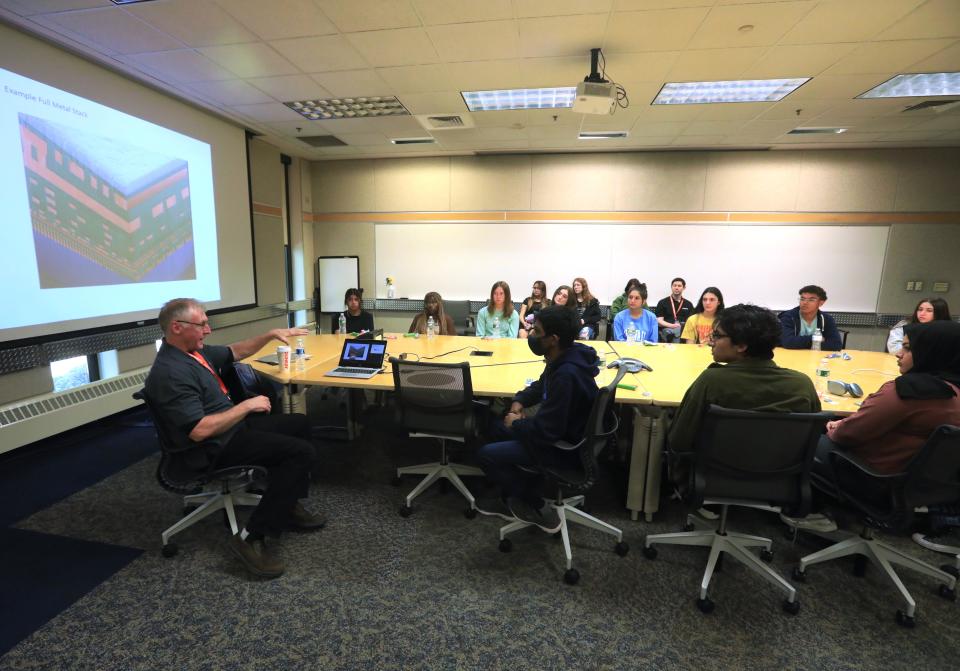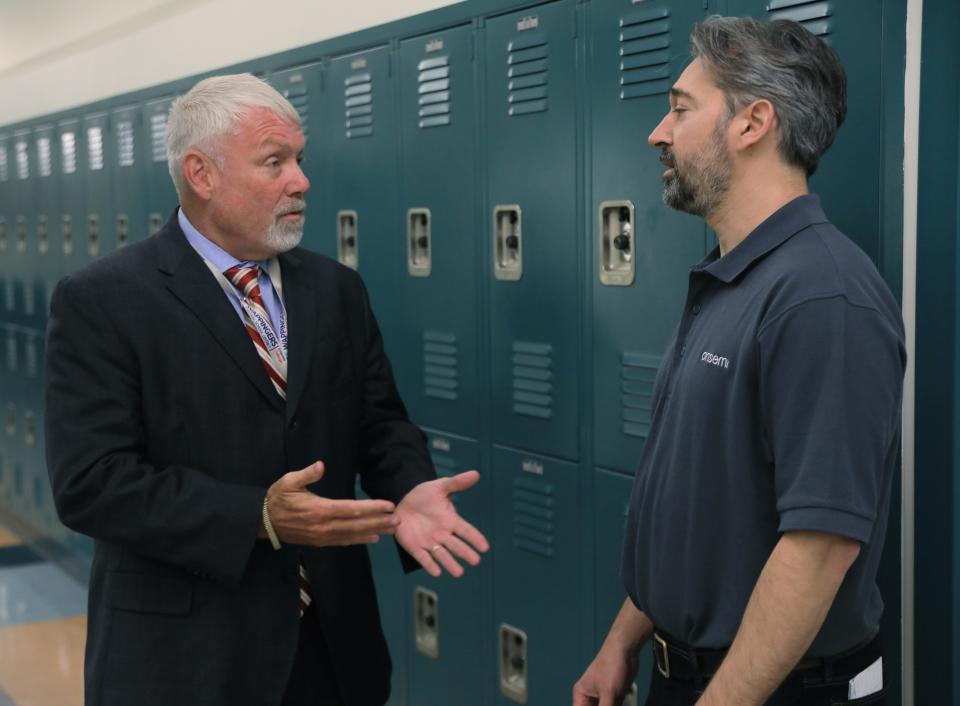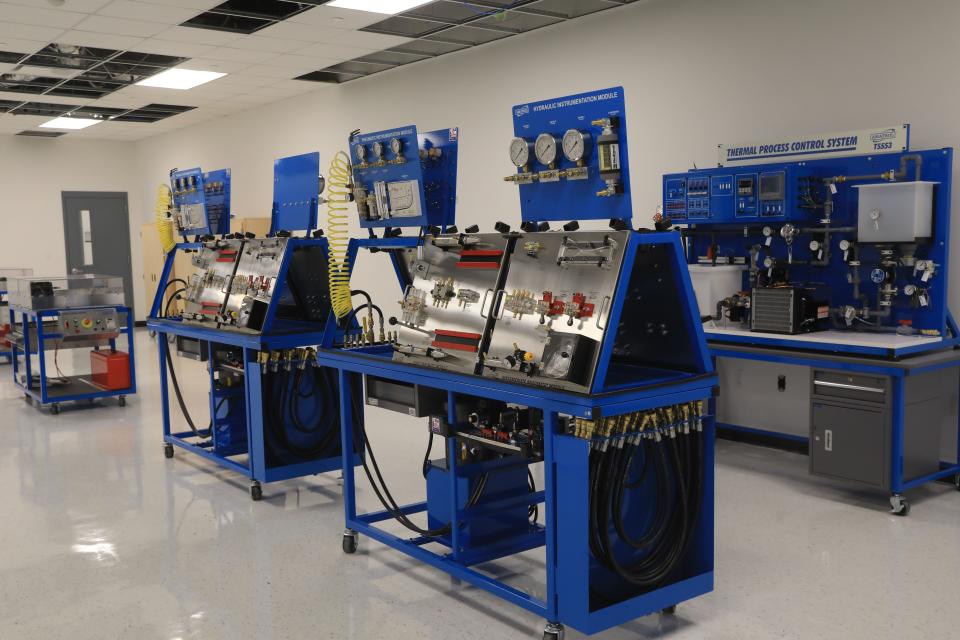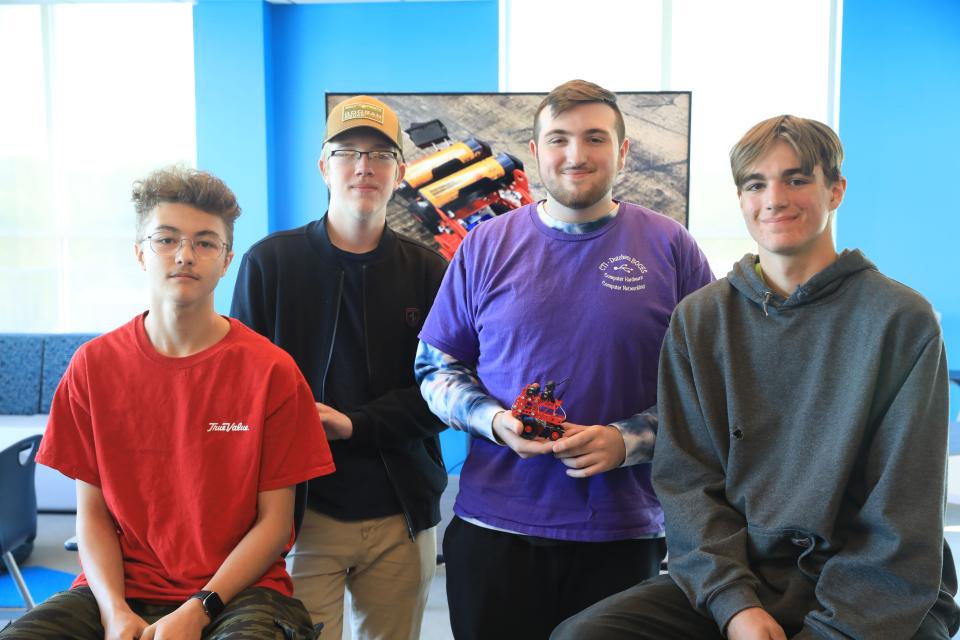How Dutchess looks to the future to address its tech workforce
The 18 students, John Jay High School juniors and seniors, sat in a conference room in OnSemi's East Fishkill campus. The company manufactures chips for devices found in everything from electric cars to the power grid. The students, who had just finished a tour and discussion on engineering, went around the table sharing the fields and professions they were heading into after graduating.
Biochemistry. Medicine. Political science and business. Environmental engineering. Law school. Orthodontics.
Very few were interested in becoming engineers and none wanted jobs in manufacturing. Most didn't even think they would be coming back to Dutchess County to work.

"Everything you will do in life, you will have to have some problem solving ability, and engineering is just problem solving with math and science," Leah Miller, who teaches Advanced Placement Chemistry, told her students as they were ending their visit to OnSemi.
Politics: State Democrats busy in Dutchess County: Here are the issues they are pushing
Housing: Which affordable projects are getting $8.9 mil in housing trust funds
NY flood: New records set for rainfall totals, without a hurricane
The federal government plans to pour billions into the chip manufacturing industry, in order to cut off supply chain dependence on foreign countries, but the Hudson Valley region has faced a shortage of individuals trained to fill the positions needed, and as young workers leave the state and an aging population retires, the problem has been exacerbated.
Wappingers Central School District has organized field trips to visit companies such as OnSemi, GlobalFoundries, and Central Hudson and has also brought them into their schools to encourage students — some of them as young as third grade — to consider a career in the engineering and manufacturing spheres, all part of an effort to meet the growing demand for a workforce capable of turning New York into a tech powerhouse.
OnSemi is working with high schools and and community colleges on including the skill sets needs for their jobs into the curricula. The company anticipates that with the increase in private investments boosted by the funding that will be coming through the CHIPS and Science Act, "the demand for that type of talent is rising in parallel."
Dutchess County Education and Workforce committee helped allocate over $1.2 million for lab equipment and fitting for Dutchess Community College because of the over hundred manufacturers in the region who are "desperate for workers," according to Assistant Dutchess County Executive Ronald Hicks.
On Wednesday, the state announced $31.5 million in funding to a program that would create pathways for high school students into these fields and careers. The schools awarded the New York Pathways In Technology Early College High School Program, or P-TECH, include Dutchess BOCES, Yonkers Central School District, Peekskill Central School District and Brewster Central School District.

"The more we can expose kids to a variety of careers that are literally two blocks away from them and actually show them how to get there in a fun and engaging way, I think we will get the buy in from students," said Jason Schetelick, superintendent of Dutchess BOCES.
Building the labor pipeline
Dutchess Community College will be enrolling its first cohort of 30 students into its mechatronics program this fall. Mechatronics, described as "intersection of mechanical systems, electrical systems, control systems and computers," will train technicians and help fill the labor shortages companies like OnSemi may be experiencing.

The 6,000-square-foot mechatronics lab at the DCC campus in Fishkill, occupying space that was once part of the Dutchess Mall, will provide workforce training and certification in the areas of mechanical, electrical, automation and HVAC.
The college is also working with Dutchess BOCES on bringing New York State's P-TECH program to the county. P-TECH is a collaboration between a school district, a college and an industry partner. Students are introduced to technical career pathways in middle school and they can take college level courses in those fields starting in 9th grade. Students would then graduate high school with a diploma and an associates degree.
Wednesday, Dutchess BOCES was awarded $2.95 million in partnership with the community college and The Council of Industries. Some of the funding will also be going to the college's Mechatronics lab.
The hope is that programs such as P-TECH and Mechatronics will be part of a labor pipeline that starts at eighth grade and goes through BOCES Career & Technical Institute, post-secondary credentials, degrees and certificates that will address the technical and skills gap, according to Peter Grant Jordan, DCC president.
Dutchess BOCES has also been talking with New York State to allow for industry professionals to be certified in order to come into the classrooms to teach, said Schetelick.
Getting hired
But even with the looming labor shortage, what this public-private partnership cannot do is guarantee job placement.
OnSemi took part in a project, Authentic STEM, earlier this year where a group of six BOCES students were asked to build a small robotic puzzle to be used in a hiring exercise. The experience was meant to allow the students, who were recommended by their teachers, to work with professionals and make connections with local industry.

The students also worked with the University of Siegen in Germany and middle school students from upstate New York.
"Communicating better, troubleshooting, figuring out the problems and how to fix them," said Daniel Nieves Gamboa as to what he learned from taking part in the program. Having exposure to the industry allows students to gain technical skills and also pick up an understanding of how to work in a professional setting.
About 40% of BOCES students will go directly into a career, according to BOCES' superintendent. Enrollment in the school's Career & Technical Institute has also increased over the past five years. This past school year was the first time BOCES did a "career signing day" where they highlighted a handful of students who signed on with companies.
Allowing industries into the classroom is meant to create a connection for students that will help them get jobs and allow potential employees the ability to follow a student's progress. But, in the end, it's up to the industries to hire students who take part in these programs.
"I was trying to get (a student) an interview with (OnSemi) because of the STEM program, that's the reason why I chose him to be part of the group because of the STEM program," said James McQuade, an HVAC instructor. He had trouble setting up an interview with OnSemi for one of his students. OnSemi later told the Journal the student's job application was in process and he had spoken with a recruiter.
"We are working with BOCES to identify opportunities to improve engagement and communications to ensure much needed top technical talent understand their path to pursue careers at onsemi," said Stefanie Cuene, a spokesperson for OnSemi.
What a people shortage means for jobs
While OnSemi has said it is able to hire to meet its need, there is "an there is an increasing need for maintenance technicians with relevant two-year degrees locally and nationally across the semiconductor industry," according to Cuene.
Steffen Kaldor, an engineering director at OnSemi, who helped guide the students through the tour said there is a shortage in two-year degree maintenance technicians, individuals who can operate equipment and have basic electromechanical skills.
Entry-level technicians bring in upwards of $40,000, and engineers starting out can make over $80,000, according to job postings and labor statistics.
Labor shortages in all industries may be exacerbated over the years with decreasing birth rate and school enrollments and an aging workforce with a growing gap in the skills needed for these type of advanced technology jobs. Also,over the past two decades, jobs in manufacturing were discouraged or not discussed in education settings.
A shortage in labor in this growing industry may not translate into reduced manufacturing, it just means that companies may have to focus more on automation.
"We don't think it's replacing jobs, but it's helping companies address to address jobs that are currently unfilled," said Johnnienne Hansen, vice president for the Council of Industry.
The Council of Industries has been working with industry leaders, educators and government to close the hiring gap within manufacturing. The solution isn't just found in local high schools, but also in training and providing incentives to those already in the workforce. The recent issue of the council's magazine stated that by closing the gender gap, only 29% of manufacturing workforce is female, and diversifying the workforce could fill in most of its empty positions.
"The electromechanical program that they have at Dutchess has been a success story, we get a lot of technicians out of that program, but not at the volume that can really keep up," Hansen said.
Saba Ali: SAli1@poughkeepsiejournal.com; 845-451-4518.
This article originally appeared on Poughkeepsie Journal: How Dutchess is closing the labor shortage gap in tech manufacturing

